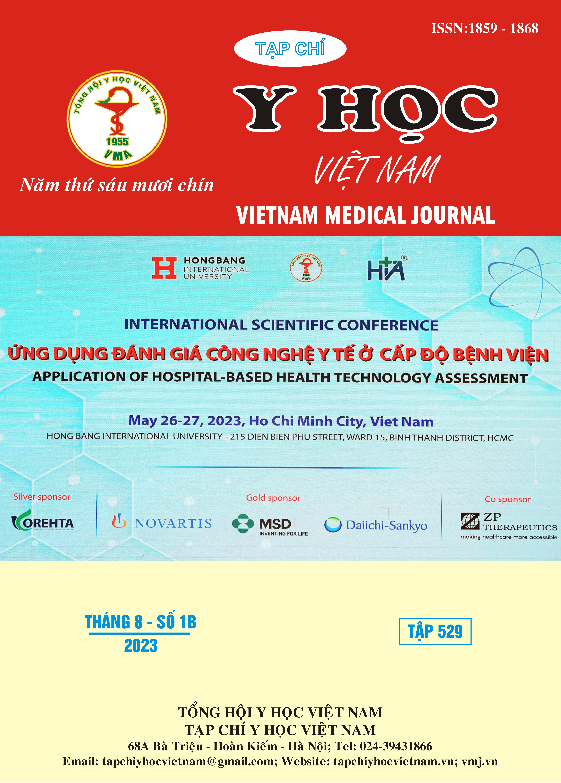THỰC TRẠNG CẤP CỨU CHẤN THƯƠNG TRƯỚC VIỆN QUA CÁC TRƯỜNG HỢP NGƯỜI BỆNH NHẬP VIỆN TRUNG TÂM CẤP CỨU DO TAI NẠN GIAO THÔNG TẠI BỆNH VIỆN ĐA KHOA TỈNH THANH HÓA
Nội dung chính của bài viết
Tóm tắt
Đặt vấn đề: Chấn thương do tai nạn giao thông tại Việt Nam và Thanh Hóa rất thường gặp, sơ cứu trước viện còn nhiều hạn chế. Mục tiêu: Tìm hiểu tình hình sơ cấp cứu và phương tiện vận chuyển người bệnh đến Bệnh viện. Đối tượng và phương pháp nghiên cứu: Mô tả cắt ngang trên 404 người bệnh chấn thương do tai nạn giao thông nhập viện Trung tâm cấp cứu Bệnh viện đa khoa tỉnh Thanh Hóa. Kết quả: Nghiên cứu của chúng tôi gồm 404 người bệnh, trong đó có 300 nam (74,3%), 104 nữ (25,7%). Tuổi trung bình là 37,15; nhóm tuổi dưới 18 tuổi chiếm 8,7%, từ 18-60 tuổi chiếm 76,2%, trên 60 tuổi là 15,1%. Số người bệnh gãy xương chi chiếm nhiều nhất: 113 (28%), chấn thương sọ não: 97 (24%), chấn thương hàm mặt: 80 (19,8%), đa chấn thương: 62 (15,3%), chấn thương bụng: 22 (5,4%), chấn thương ngực: 10 (2,5%), chấn thương phần mềm: 9 (2,2%), chấn thương cột sống cổ: 5 (1,2%), chấn thương cột sống ngực, lưng: 3 (0,7%), vỡ xương chậu: 3 (0,7%). 164 người bệnh chưa được sơ cứu trước nhập viện (40,6%),. 223 người bệnh nhập viện bằng xe cứu thương (55,2%), 180 người bệnh nhập viện bằng xe taxi (44,6%) và 1 trường hợp nhập viện bằng xe máy (0,2%). Phân loại mức độ nặng theo thang điểm ISS, mức độ nhẹ: 241 (59,7%), trung bình: 103 (25,5%), nặng: 42 (10,4%), nguy kịch: 18 (4,5%), nhóm không được sơ cứu có mức độ bệnh nặng hơn nhóm được sơ cứu. Kết quả điều trị 24 giờ đầu, chuyển chuyên khoa: 338 (83,7%), chuyển tuyến trung ương: 13 (3,2%), chuyển khoa hồi sức tích cực: 26 (6,4%), mổ cấp cứu: 19 (4,7%), nặng về hoặc tử vong: 8 (2,0%). Kết luận: Tỷ lệ người bệnh nặng và nguy kịch do chấn thương sau tại nạn giao thông cao, nhiều người bệnh không được sơ cứu và không được vận chuyển bằng xe cứu thương.
Chi tiết bài viết
Từ khóa
Sơ cứu bệnh nhân chấn thương; tai nạn giao thông
Tài liệu tham khảo
2. Phạm Thị Mỹ Ngọc, Phạm Văn Lình (2013), “Thực trạng sơ cứu và vận chuyển nạn nhân tai nạn giao thông đường bộ từ hiện trường tai nạn”, Y học thực hành (876) số 7/2013.
3. Đinh Văn Quỳnh, Nguyễn Đức Chính (2021), “Thực trạng cấp cứu chấn thương trước viện qua các trường hợp chấn thương sọ não nặng do tai nạn giao thông cấp cứu tại bệnh viện Việt Đức”, Tạp chí y học Việt Nam (509), số 1/2021
4. Trần Minh Hào, Vũ Minh Hải (2021), “Mức độ chấn thương và thực trạng sơ cấp cứu trước viện tại nạn giao thông đường bộ đến khám tại bệnh viện đa khoa Tiền Hải, Thái Bình năm 2016”, Tạp chí y học Việt Nam (505), số 2/2021.
5. Nguyễn Minh Hải, Nguyễn Trung Kiên (2022), “Nghiên cứu đặc điểm, kết quả sơ cứu ban đầu và điều trị thương tích do tai nạn giao thông đường bộ tại bệnh viện đa khoa trung tâm An Giang năm 2020-2021”, Tạp chí y học Việt Nam (510), số 1/2022
6. Hue Thi Mai, Hai Minh Vu (2020), “The status of first aid and its associations with health outcomes among patients with traffic acciddents in urban areas of Vietnam, Environmental Research and Public Health.
7. World Health Organization. Prehospital Trauma Care Systems; WHO: Geneva, Switzerland, 2005
8. Nguyễn Hữu Tú (2010). Nghiên cứu áp dụng các tiêu chuẩn quốc tế về đánh giá độ nặng và tiên lượng bệnh nhân chấn thương tại Việt Nam. Đề tài cấp bộ.


